| Wreader's Digest - How To Appreciate
Hyperfiction
von Anja Rau
Abstract
Compared to its age - or youth - hyperfiction is a rather well-theorized
genre. Hyperfiction-criticism either praises its subject as evolved
print-text and better realization of contemporary literary theory -
or deplore its - allegedly - low literary quality. What is missing,
however, are in-depth readings of digital fiction that deemphasize theory
and try to appreciate this new genre for what it has to offer.
In this "paper", I will read two hyperfictions
that are not among the two or three canonized texts that are relatively
well-known and often-quoted. Both John McDaid's Uncle Buddy's Phantom
Funhouse and Sarah Smith's King of Space deal with central
issues of hypertext-theory - in content as well as formally. They are
about agency and sense-making, ironically deconstructing mainstream
theory's claims that digital, hyperlinked texts activate readers into
a de-facto author-position. They are also representations of contemporary
life that may be difficult to read at first but also make strangely
adequate and enjoyable texts for today's readers.
On Hyperfiction
A comparatively budding genre in the 1990s, today hyperfiction seems
to be receding into the classical antiquity-department of the study
(and perusal) of digital literature - much like the textadventure before
it. On the other hand, hyperfictions are the first instances of literature
in the digital medium to make it into contemporary anthologies and grad-school
text"books" (for lack of a better expression ...). Still, with the increased
availability of broadband internet access in the home and aggressive
marketing of CD-ROMs and online entertainment, digital literature becomes
more and more multimedial, leaving text-based specimens to look like
experiments, once needed to pave the way but now outdated. In the wake
of our culture going multimedia, however, there is a point in turning
back to take a look at the siblings of Afternoon - published
in 1987 and considered to be the "granddaddy" of hyperfictions - for
what they can tell us about reading and writing in digital space, for
what they can tell us about our lives, too, and also for the pleasure
of reading them.
Digital fiction - and especially hyperfiction
as one of its earliest specimen - is a well-theorized genre - some might
say over-theorized, primarily if put in relation to its literary merits.(1)
Central among these approaches is the idea of hyperfiction as embodiment
of literary theories of the active reader (2), as
in Barthes' concept of the readerly and writerly text.
Hypertext (fictional or non-fictional) is said to activate the reader
who has to realize the text in reading it. In this way, hypertextual
fiction is held to be more enjoyable than a linear novel that imposes
an author's intended meaning on the reader. In fact, hyperfiction is
often placed in a teleological context as the logical and best continuation
of the key issues of postmodern (literary) theory.
But this discourse of progress, of a
better or more adequate realization of contemporary theory, of the evolution
of the text from restrictive, closed print to flexible, open hypertext,
puts unnecessary pressure on the digital text (as well as its reader).
When we read hyperfiction hoping to find the better text, we may not
only be disappointed by the (quite expected) shortcomings of a young
and fledgling genre, we're also likely to miss its achievements and
its beauty. This is not to say that thoroughly theorized hyperfiction-criticism
should be put on ice until the genre has grown up,(3)
but what both the genre and its theoretical contextualization need are
more thorough readings that sound its depths and show the print-schooled
reader how to appreciate this unfamiliar text-form.
Appreciation
Appreciating someone else's views and encodings of these views is not
about looking to an approved sense-maker for a guided tour of one's
own life. Sven Birkerts, whose Gutenberg Elegies are almost canonical
in hypertext theory, for example, reads for meaning, the author's intended
meaning: "The fictional world is a world with a sponsoring god [...].
The author's reality is meaningful - an intended entity - and we soak
it up right along with the story line. [...R]eading created in me the
awareness that life could be lived and known as a unified whole [...].
Without that faith, that sense of imminent resolution, the events of
the day-to-day would be like some vast assortment of colored beads without
a string to hold them together." Multiple points of view, diversity,
are not for Birkerts. He knows the author must have deposited meaning
somewhere and now the reader is here to find it and "soak it up". "[B]oth
structuralism and deconstruction", Birkerts argues, are to be grasped
as the inevitable intellectual accompaniment to the fragmentation and
collapse of formerly coherent systems in the face of the communications
revolution. ... [T]he effects of interactive programs on users sound
a good deal like the symptoms of postmodernism. And [...] this recent
cultural aesthetic [...] may be a consequence of a larger transformation
of sensibility by information-processing technologies.".
The point of appreciation, however, is
not the desire to live by someone else's word, but to appreciate their
view of the world as well as the way they express it. Active reading
as recommended by hypertext-theory, on the other hand, is not about
abandoning the desire or the habit to live by someone else's word, for
the liberated feel of drawing from a text whatever one wishes to find
in it.(4) The contemporary approach of reading without
imagining a "sponsoring god" (5) behind the text can
very well go along with an appreciation of the author's/writer's view
of the world as well as the way they express it. Deciding to sit back
and appreciate someone else's writing does not make me a "passive",
merely consuming reader. And why should everybody want or have
to be a writer in the first place? Most of the time, writing is merely
damn hard work. I can't remember when I last grabbed the keyboard and
typed a few sentences for the sheer joy of seeing the words roll out.
But it was only yesterday that I read the first few lines of Mrs
Dalloway, amazed, as if it had been the first time, by Woolf's skill
and ease: The way she, in only a few sentences, rolls the whole book
into a ball to let it slowly unfold from there.
Perhaps it is impossible to truly appreciate
what someone else has written without having experienced what it means
to write oneself - but that has nothing to do with readerly or
writerly texts, with passive or active readers. A non-cook can
enjoy good food without being able to fully appreciate the craft behind
it; a non-writer can enjoy a good piece of text. It is possible to claim,
quite self-righteously, that without the experience of writing, one
cannot adequately appreciate what someone else has written, but for
both writers and non-writers it is permissible to decide that
what they want to do right now is not to write but to enjoy someone
else's writing.
Alain de Botton's How Proust Can Change
Your Life, for example, is a pleasure to read because it not only
makes me appreciate de Botton's writing but also that of Marcel Proust.
It lets me participate in another's appreciation of someone's texts,
which makes me feel immediately better about doing this sort of thing
myself. De Botton's writing displays an outlook on life that seems to
be - across gaps of gender and culture - remarkably compatible with
mine. I enjoy reading his renderings of situations I've known and some
that are not part of my active experience. However, I do not only appreciate
what he writes (although How Proust actually and embarrassingly
made me reevaluate choices I'd made in real life and prompted a move
or two), but also how he puts it. In de Botton's words apropos
of Proust's relation to Ruskin:
"Ruskin had expressed things which Proust might
have felt himself, but could not have articulated on his own; in Ruskin,
he found experiences which he had never been more than semi-conscious
of, raised and beautifully assembled in language."
The author does not prescribe a view of the
world or an approach to my life, but by applying the text (or parts of
it that touch me) to my life, I can become aware of experiences and facets
and of ways to read them that had hitherto been unreachable, I can also
be encouraged to continue to perceive the world in ways that I have used
before.
Hyperfiction Now
Hypertext (and fiction-writing in hypertext) works with an approach to
life, reality and the representation of these concepts that clicks with
what can, in a sweeping approximation, be called a postmodern view of
this world - small surprise, as the "inventors" of hyperfiction have,
themselves, been shaped to no small degree by a traditional education
in postmodern literature and theory and the world around them. A unified
outlook on reality, a single perspective, a linear setup, a meaningful
plot, a logical conclusion, a proper end are nice and quite consoling
to have in a story. The way John Irving, in the very last pages of A
Prayer for Owen Meany, weaves the surfeit of plotlines and seemingly
loose ends into one perfect whole can be just the right reading for a
certain mood. But fictions/factions that do or try to do without these
concepts are uncannily adequate for describing life as most people today
experience it on most days - ruptured, fractured, with no well-worn plot
to catch them. Reading an Auster or Borges or Gustafsson may not provide
the big answer to the ultimate question, but these texts offer a sense
of recognition, a small not-quite-a-narrative that is better suited to
describe contemporary experience than a big old beginning-middle-end novel.
Readers can enjoy and appreciate the way these authors encode the world
we live in in words that make sense to us (even if this sense is the assertion
of ultimate senselessness). The same goes for hyperfiction.
The
active, in control reader-become-writer, the wreader, is a welcome
guest of hypertext. Allegedly, with a hypertext, the reader has every
possibility to shape the text after his or her needs and desires. The
author, or so the myth goes, creates the text as an offering of options
and choices, of stories that make and unmake themselves anew in every
reading, and then surrenders the building blocks to the reader who then
turns into a writer-once-removed. Not. A lot has been written about
agency,(6) but texts that give the reader room for
co-creativity, that turn him or her into their de facto author have
not yet appeared. Instead, readers of hyperfiction, in particular, often
complain that they feel at the mercy of the text, pulled hither and
thither by invisible paths and hidden guard fields, unable to determine
even basically what the text is about, let alone make sense of it (which
is not an approved approach to hyperfiction, anyway). Many of the second
generation hypertext-critics even claim that hypertext imposes far more
restrictions on the text and the reader than good, old linear story-writing.
Uncle Buddy seems to know, standing in a corner with a knowing
smile, waiting for us to find out. King of Space, on the other
hand, deals with the active reader, the possibility to make sense of
a text which a hyperfiction - allegedly - offers to its reader. But
in King of Space, this possibility soon turns out to be an empty
promise and the text reasserts its power - over the reader, over itself.
Uncle Buddy
The Death of the Reader
Uncle Buddy's Phantom Funhouse is a HyperCard
hyperfiction that comes with two tapes of music and assorted materials
on paper (including mock proofs of a short story). Central to the fiction
are author-musician Arthur 'Buddy' Newkirk, his band, the Reptiles, and
his love for elusive Emily Keane. The fiction is about growing up in the
US in the 1970s and early 1980s, about popular culture and the development
of the microcomputer, of electronically amplified and distorted music,
of grassroot-movements and eventually (or somewhere in-between) about
the end of youth. The text reaches the reader in the form of a computer-application
that has to be installed on a local hard-drive, but one can easily imagine
it to be the neatly customized user-interface of late Buddy Newkirk's
personal portable, the House serving as entrance point to the different,
diverging and interweaving threads that make up this man's life, stored
and documented on silicon. Uncle Buddy can be read and reread,
the reader can play with the tarot or the "burrower", browse the lyrics
to the Reptiles's records, read through McDaid's version of Pavic's
Dictionary of the Khazars, or peruse any or all of the other stacks
of the Funhouse, the Haunt House and the Necropolis. Although
HyperCard is used in a less flexible and volatile way than it could
be, the Funhouse at first appears to be a rather open text,(7)
the bits and pieces of a life, provided by someone for the reader to
make sense of in her own good time, taking the parts she deems important,
leaving other aspects unactualized by choice or at random. Uncle
Buddy uses only few resources for imposing rhythms and patterns
on the reader - which frees the reader to arrange the puzzle at will.
However, the text explicitly denies the possibility of making ultimate
sense: McDaid does not seem to believe in the wide open text, deserted
by the author to be created and recreated by the reader - any reader,
any time.
The Author
Dialog boxes are a well known feature of computer applications: ever
so often, a click invokes a little window that offers the user a piece
of more or less intelligible information together with a choice of action,
be it only to close the window in question. Those boxes seem to come
up from the depths of the program, carrying the voice of the program
or even of the computer itself - or rather, to take a step back from
this popular anthropomorphism, the voice of the programmer, who points
out errors and options. In the case of a hyperfiction that is usually
written and programmed by one and the same person, all but the very
standard dialog boxes can easily be perceived as the voice of the author,
offering help with understanding the text in a "dear reader" sort of
way.
Dialogs pop up
all through Uncle Buddy, for the first time in the "legal" documents
of READ ME FIRST (Fig. 1)

Figure 1. READ ME FIRST page from
John McDaid's Uncle Buddy's Phantom Funhouse
Clicking on "Click here for help on using
the Macintosh" triggers a dialog that reads "Help feature not yet implemented."
(Fig. 2)
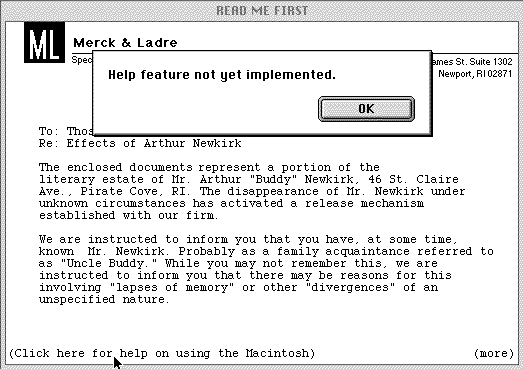
Figure 2. Example dialog pop-up in Uncle Buddy
"Oh, a beta-version," you think. But
only for a minute. The shiny black cardboard box, the added materials
in the packaging, the tapes - nothing about Uncle Buddy suggests
that the copy you hold was meant for testing only. But if "Help feature
not yet implemented" is not a standard error-message which the program
returns by default, what is it? Let's have a look at some other weird
dialogs. In the Haunt House, in Orpheus, a click on "Play" calls up
a dialog that goes "Are you kidding? You think this made it to production?
Hah." with a button that reads "Oh, well", leaving it to the reader
to close the window with a resigned shrug. (Fig. 3)
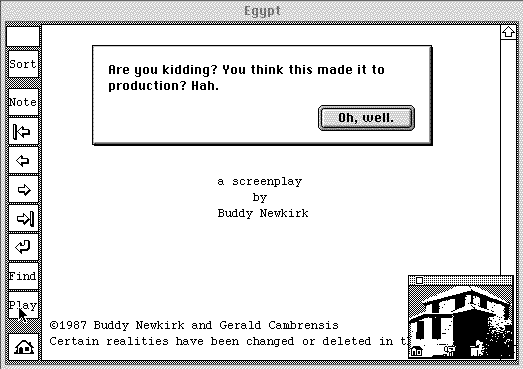
Figure 3. Another example dialog
So much for the reader's freedom to at
least co-create the text of this hyperfiction. And in Feral Guts all
buttons return: "They're just for tourists" - "OK." (Fig. 4) Once more,
what seems to be a place for the reader to start interacting with the
text turns out to be a dummy only. The author seems to look in on the
reader every now and again, as if to say "go ahead, interact, but I've
already been here".
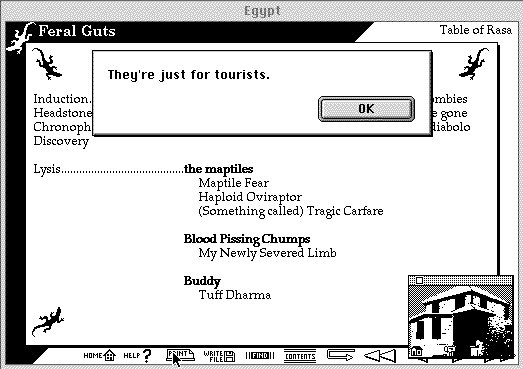
Figure 4. In Feral Guts all buttons
return: "They're just for tourists" - "OK."
McDaid takes this game to its logical
limit. The last screen of the deepest level of Uncle Buddy, the
Necropolis, calls up the following dialog: "I'm sorry you saw that.
You shouldn't have seen that. Now I'll have to kill you.", leaving for
the reader only a button helplessly labeled "But ..." which terminates
the application. (Fig 5) The text (or was it the author?) announces
that it has to kill the reader and closes itself down without giving
the reader a chance to reverse this process. The death of the reader
- not the author. Despite or rather while deconstructing text and meaning-making,
letting the reader play with the text, distort it, hack into it, Uncle
Buddy deconstructs the myth of the disempowered author and the reader
as creator, too. Although, ironically, when the program quits, every
trace of the author disappears with it.
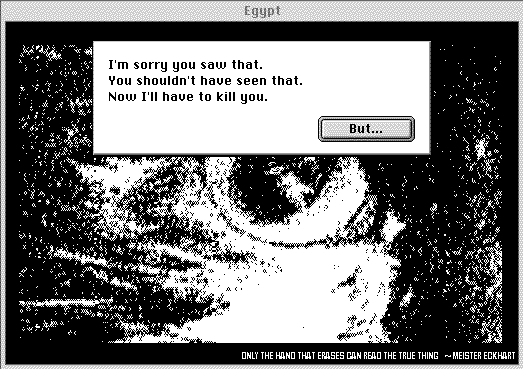
Figure 5. Terminating Uncle Buddy
The Active Reader
The good reader, who starts reading where she or he is told, with the
READ ME FIRST document, is channeled into the fiction via a couple of
(fictitious) legal documents that determine her or his access to the
Funhouse: "Mr. Newkirk has passed these items into your hands for whatever
purpose you wish to make of them, for any legal end whatsoever." (Fig.
6)
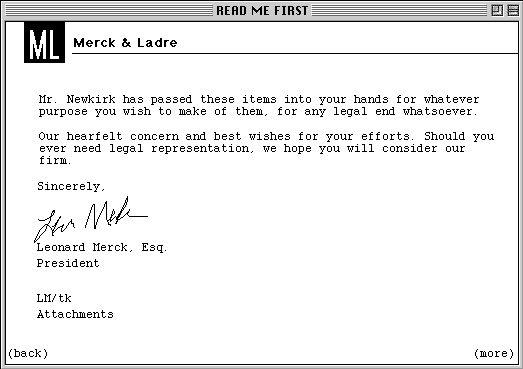
Figure 6. (Fictitious) legal documents determine access to the Funhouse
It seems as if the reader is free to
do as she or he chooses with the text under her fingertips. The
"legal purpose" appears to be merely a staple of legal prose - of course
a law firm would not suggest their clients engage in illegal activities.
Taking a closer look, however, we must find that this caveat establishes
as well as regulates the author-reader-text-relationship. Presented
to the reader/user as a READ ME FIRST file, the legal agreement is too
close to a license agreement to ignore its applicability as a copyright
notice. Indeed, the explicit delineation of the reader's rights and
duties is spelt out in the manual that forms part of the rich assortment
of additional materials that come with Uncle Buddy:
"It is strictly forbidden "[to] modify, translate,
reverse engineer, decompile, disassemble, create derivative works based
upon, copy (save for archival purposes) the program or the accompanying
documentation; [...] remove any proprietary notices, labels, or marks
on the program and accompanying documentation." (8)
So, certain kinds of freedom of the reader towards
the physical text are clearly excluded. In
a not so verbatim reading, the "legal end" can be taken to refer to
the situation of the reader of digital texts in general. The text does
not per se give the reader every creative and meaning-making
freedom. Rather, the reader is referred back to an internal layer of
the text where it can be as open or closed as any other text, independently
of the medium that transports it. The reader of Uncle Buddy has
to actively engage in and with the text both mentally and kinetically.
However, the opportunity for kinetic involvement that we do not find
in texts on paper is not elevated to denote the reader's general freedom
to turn the text into anything she or he wants to read. Instead the
notion of the wreader is played with and smartly subverted in
many ways throughout Uncle Buddy.
Start Making Sense
In fact, Uncle Buddy is a rather open text that time and again
denies the possibility to make sense of a life - even looking back on
a life that has ended [(12)]. This point is made (if implicitly, especially
in the Haunt House that seems to say "Yeah, right" to Buddy's attempts
to write his and Emily's story in the Funhouse) but also performed formally:
The Funhouse offers the reader (not necessarily coherent) glimpses into
the different parts of Buddy Newkirk's life - bits and pieces from which
the reader can sample an idea of this life. But the parts of the mosaic
do not come together to form a unified image. They remain a collection
of facets, like a magic eye-picture - only this time, no one true image
emerges from a certain, "true" point of view, but differs from viewer
to viewer, from point of view to point of view, from reading to reading
even.
Much like the default-paths
in King of Space (see below), the mosaic-pieces of Uncle Buddy
organize into units, clusters with recognizable surfaces, of all which
are embedded in the central image of the Funhouse. The Funhouse is interface
and motif simultaneously and suggests that, a least to a degree, the
parts of the story can be brought together into a consistent whole.
This impression, however, is broken and countered by the deeper levels
of the Funhouse, the Haunt House and the Necropolis that can only be
opened with the help of passwords. The Haunt House, which shifts the
focus from Arthur Newkirk to Emily Keane, cancels the integrated view
and the construction of a life-story that is attempted in the Funhouse.
The level of the Necropolis, finally, the dwelling-place of the dead,
negates the reader's possibility to read every bit of the text and create
sense from the pieces. The Necropolis has but a single path which ends
in the symbolic "death" of the reader (not the author).
With this obstinate ending, Uncle
Buddy forces the reader to resume her or his reading, to re-enter
the Funhouse, to (very probably) re-read and re-view certain stacks
with a greater knowledge of the text as a whole, with knowledge gained
from stacks read at a later time, from the Haunt House and the Necropolis,
but also with the knowledge of the final assertion of the text's (or
the author's) control over the reading-process and the eventual futility
of all her attempts to create meaning and make sense. "Believe everything,
at least temporarily. Believe nothing permanently." (Funhouse) "Believe
nothing, at least temporarily." (Haunt House) The end may crown the
work (9), but the termination of the text at the end
of the Necropolis does not provide the sort of satisfactory closure
we expect from (and usually find in) the last page of a book. Computer
games have taught us that "death" in the digital text is merely an invitation
to enter this text again with a new approach - Uncle Buddy's
insistence on temporality and impermanence only serves to underline
the understanding of the end as just one point in the progress through
the text, not a fixed point (almost) outside the text from where to
make sense of it in retrospect.
King of Space
The Obstinate Text
The hyperfiction King of Space by Sarah Smith
is a forking science fiction about love and power, truth and life, which
most of the time ends in a kind of navigation bridge tetris-derivate,
with memory and a shoot 'em-up thrown in. Ideally, this game should be
winnable, the player should be able to refill the spaceship's resources,
the "story" should resume. Usually, however, the game ends in an energy-drain
which entails a fatal hit and the destruction of the ship - and thus the
end of the game and the narration. But this can only end the narration
for the moment, the game restarts automatically, until the reader/player
quits, frustrated, tired or bored. It seems that King of Space
has a mind of its own - not only in this respect. King
of Space uses a graphic interface; the text-blocks appear in the
card-format known from HyperCard, on a background with meta- and navigation-buttons.
Their length is almost always cropped to the default card-size. Some
of the cards have an individual graphic design, some work with sound
and sometimes animated sequences are called up. What's most important,
forking points are few and always clearly marked; there are no hidden
links or guard fields. Whereas in hyperfictions like Afternoon
or Victory Garden most nodes have multiple outgoing links, King
of Space works with long default sequences, comparable to "paths"
in Storyspace. This way, the reader is almost always oriented, which,
finally, enables him or her to realize that the text obstinately dismisses
his or her constructive interactions.
Orientation
What makes most hyperfictions such frustrating reads is their structural
opacity: the reader is almost permanently disoriented, "lost in hyperspace"
(as Ted Nelson is said to have said). Few hyperfictions, such as Shelley
Jackson's Patchwork Girl (Fig. 7) or Kathryn Cramer's In Small
& Large Pieces (Fig. 8), use graphic interfaces, and then those
interfaces are rarely designed as fully-fledged navigation aids. But
King of Space, with its tetris-derivate, its "Horizator" and
its animated sequences, does not deny its roots in computer games. (10)
Much like games, this text relies on explicit marking, through both
content and images, to pinpoint both positions within the text and choices
open to the reader at certain positions.
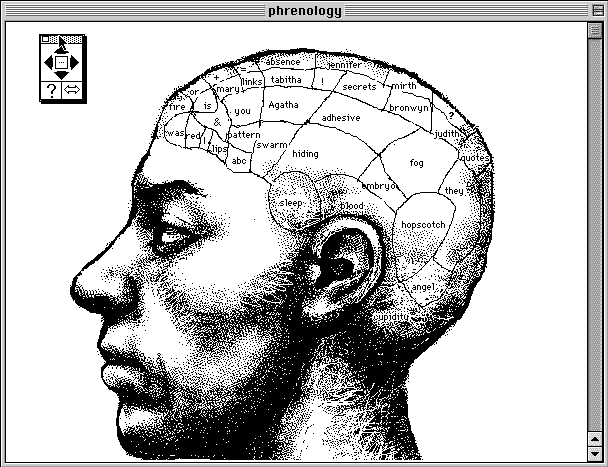 Figure 7. Graphic interface from Shelley Jackson's Patchwork Girl
Figure 7. Graphic interface from Shelley Jackson's Patchwork Girl
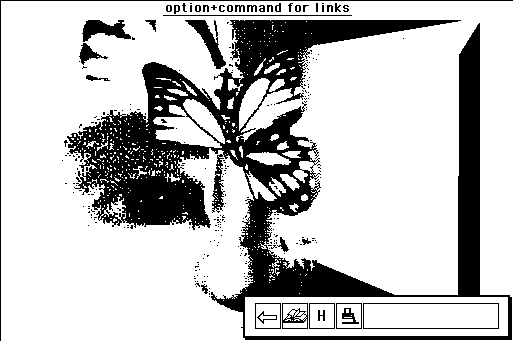
Figure 8. Graphic interface from Kathryn Cramer's In Small &
Large Pieces
In most cases, choices in King of
Space appear as check-boxes with short captions, as in screen 15
(11): With the last resources of his ship, Tam Rosse
has managed to approach the Lady Nii, a "greatship". Beside the greatship,
there is a "lifeship" with enough material on board to replenish his
own or another greatship.
"But there will be a crew. A Priestess and her
Red King. The chief Imperial servants in the Asteroids. The Priestess
with her powers controls life and death in the Rocks. The Red King is
her lover, her helper, her bodyguard. A condemned criminal, a violent
man, he is linked to her by bonds as strong as life. They're trouble.
But so is Tam."
At this point, Tam has two choices:
"Tam Rosse brings his ship into synchronized orbit with the lifeship
Tam Rosse brings his ship into synchronized orbit with the greatship."
(Fig. 9)
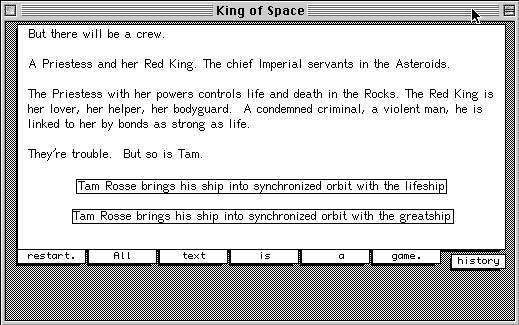
Figure 9. Tam's two choices, from King of Space
by Sarah Smith
Both captions function as buttons with
which the reader can call up an alternative path, the sentences are
framed in black and thus set off from the rest of the text. There are
other graphical aids, like the jagged frame of the airlock or gates
and forks that are guarded by games. Marking forks like this makes it
possible for the reader not only to make informed choices, but also
to retrace his or her step through a number of forks back to a point
from where he or she (not the application) wants to set off again. They
also let the reader realize he or she has returned to a card she has
read before, a situation she/Tam has been in before.
Michael Joyce has pointed out the importance
of re-reading for hyperfiction. A hyperfiction, for him, is like a love-story:
"Two people meet. They fall in love. They quarrel and part. They reconcile."
(12) This can go on and on, until one or both of them
approach the situation with a new insight, gained either outside the
circle or triggered by the realization that one is going in circles
at all. But in a text-only hyperfiction with guard fields even, the
reader cannot recognize a recurring node - unless she learns by heart
every node she visits and even then she cannot know what happened under
the surface, which new links had opened up, which ones had closed -
not even which she'd visited already. By giving additional information
in the form of graphics, King of Space allows the reader the
be oriented at all times. Thus, she can notice re-vision (or re-reading)
quickly and realize whatever importance a specific fiction is attaching
to this feature of hypertext.
Choice
King of Space clearly marks
decision-points within the text. Moreover, the content of the following
card usually picks up on the motivation for the decision that brought
the reader there so that the story receives a coherent explanation for
why Tam behaves in the way the reader seems to make him behave (no matter
whether this was really why the reader clicked what she clicked). If,
in screen 15 (13), the reader lets Tam enter the greatship,
the next card reads: "He looks toward the little moon [the lifeship]
for a moment. What good will it do him to go to the lifeship? . . .
Maybe he will have better luck in the greatship." (Fig. 10)
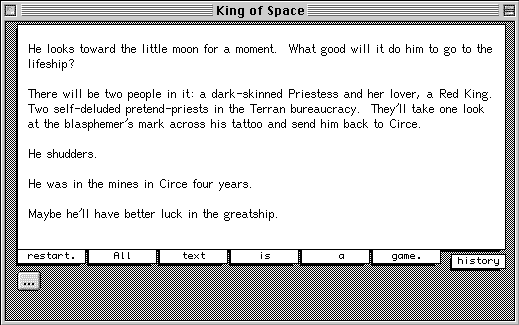
Figure 10. Decision-point in King of Space
If the reader chooses the lifeship, the
move will not be explained in further detail, however, the next card
at least re-states the setting and the situation, keeping the reader
oriented: "At the door of the lifeship he looks around warily, drawing
his heartsblood knife from its sheath." (Fig. 11)
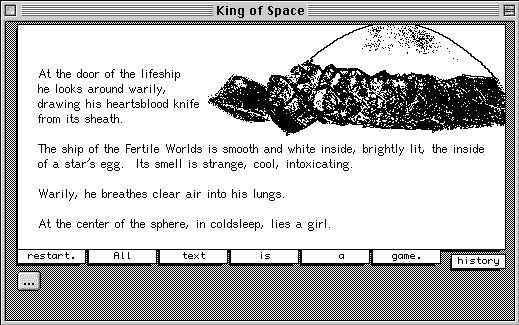
Figure 11. Keeping the reader oriented
The story seems to unfold continuously
and in a motivated manner. Still, the reader gets the impression that
she has been able to significantly and, more importantly, meaningfully
influence the plot. Unlike in most hyperfictions, she chooses links
consciously, basing her decision on information gathered and plotlines
perceived. She can, according to her predisposition, choose the paths
that seem to be more likely to lead to success (as in an adventure game),
or those that better embody her moral standpoint (later on in the fiction,
when the decisions seem to oscillate between following Tam's desires
and his ulterior motives of serving the rebellion).
Tam Rosse, and with him the player/reader,
again and again faces the decision whether to merely save his own life
(and satisfy his sex drive, while he's at it) or whether to retain his
rebel-identity. To access vital provisions, Tam needs the help of the
Priestess, but this will ultimately mean going through "the ceremony"
with her, becoming her servant, spacehabbed, but robbed of his memory
and his identity. Whenever such a decision is due, this will be signaled
to the reader optically as well as by way of content. She does not only
realize that she has to choose at this point, but also, where (more
or less) exactly her choices will take her (and Tam). However, despite
almost perfect orientation, throughout a reading, the text more and
more often turns against the reader's choice. The reader will soon find
out that the power of the Priestess is always the driving power of the
text - against Tam's (and the reader's) express will. At this point,
the navigation aids help the reader realize only too well that the story
is not going where she is trying to push it.
King of Space is a stubborn text
into which certain structures of meaning are inscribed (the, presupposed,
inevitability of heterosexuality, the manipulation of history by the
powers that be), structures the central character Tam, and with him
the reader, cannot avoid. Again and again, the text imposes its limits
on the reader's seeming freedom of choice. The reader may try, with
each strategy she adopts (the Tam who opposes the priestess, the Tam
who surrenders), to gain and retain control over the text. In her first
reading, she might accept all events as direct results of her active
choices - even a turn that appears to be contrary to the chosen path
can be interpreted as a causal development - and thus be considered
to be acceptable behavior of a reader-driven text. After a while, however,
it becomes clear that the text is going its own way. The content (the
power of sex as one of the motifs of King of Space) and the form
(the power the interactive text has over the reader) of the fiction
conflate. King of Space is about the struggle of the subject
who tries to maintain his autonomy and identity in a hostile environment,
both physically (Tam's fight for survival) and mentally (Tam, the rebel,
who in dealing with the other, the enemy, has to revise his beliefs
and convictions). But King of Space is not only about a fight,
it also acts it out in the attempts of the reader who tries to stand
her ground as an active and determining factor within the text. As the
text works against her decisions, the reader has to exercise her mental
capacities in the way described by Wolfgang Iser in Der Akt des Lesens
- generating sense and coherence in the face of a text that refuses
to yield these elements on its own accord.
Conclusion
Neither John McDaid's Uncle Buddy's Phantom Funhouse
nor Sarah Smith's King of Space liberate their readers into a yet-to-be-defined
author position. Far from this, they demonstrate quite skillfully that
even in the digital realm the activities of reading and writing are -
much as they might differ from similar activities in the paper-world -
most of the time clearly differentiated. This does not mean that hyperfiction
fails, rather that early attempts to cast this genre in theoretical concepts
may not have succeeded to sound every depth of their subject. If we start
from the assumption that reading and writing are very different sorts
of activities and that writing can have very different qualities - the
passive escape into a dream world, the disciple's search for the author's
message, the active engagement with the text - we can then begin to enjoy
different texts and to appreciate a writer's skills without losing ourselves
in her or his, presumed, universe. In
hyperfictions like Uncle Buddy, these skills are employed to
show how the world fails to make sense, to be comfortably cast in a
plot, and how our fumbling attempts to create a coherent and meaningful
narrative are repelled by life, by the text. Uncle Buddy does
so tongue-in-cheek: the usually reticent hyperfiction-author keeps sticking
his head back into the Funhouse, juggling with our notions of the replaced
author, the active reader, and the possibility of making meaning of
a life (or a text). The text (or the author) leads us astray, offers
paths and passages that turn out to be decoys. At the same time, Uncle
Buddy makes fun of traditional meaning-making and meaning-breaking
techniques alike, purposefully deconstructing the concept of the reader-turned-author,
the wreader.
King of Space, on the other hand,
takes the shape of a dystopian science-fiction. The reader's failure
to influence the course and the outcome of the text becomes threatening
in the context of rebellion and government abuse. The text refuses to
comfort, not only by withholding the consolation of a definite end.
But who made happy endings the law? The climax of King of Space
is certainly reached when the readers realizes the failure of her attempts
to push Tam Rosse's story and fate into a deliberately chosen direction.
At this point, the way she engages with the story changes from a rather
naive attempt to create one's own preferred story from the building-blocks
of hypertext to acknowledging the futility of this attempt and to adopting
a reading strategy that can deal with such an obstinate text - a reading
strategy (and an approach to life) that has yet to be found ...
Most hyperfictions and the genre as such
have been accused of many and diverse failures, from falling short of
the promises made by hypertext theory to being of lesser literary merits.
Uncle Buddy and King of Space, though not widely read
(probably due to the fact that texts written in HyperCard are limited
to the Macintosh-world), are certainly situated at the top of an iceberg
of varying quality. But for a reader who agrees to appreciate somebody
else's ways of viewing the world - instead of taxing the text's success
as embodiment of certain strands of literary theory - hyperfiction has
a lot to offer. If you want to enjoy reading a text that deals smartly
with life in a modern computerized world as well as with the possibilities
and limitations of writing and reading in the digital medium, reading
or re-reading a hyperfiction promises to be as entertaining as it is
enlightening.
References
Birkerts, Sven (1996) The Gutenberg Elegies: The Fate of Reading
in an Electronic Age (London: Faber and Faber)
Brooks,
Peter (1984) Reading for the Plot: Design and Intention in Narrative
(Oxford: Clarendon Press)
Cramer, Kathryn (1994) In Small and Large Pieces. Computer disk
(Watertown: Eastgate Systems)
de Botton, Alain (1997) How Proust Can Change Your Life (London:
Picador)
Eco, Umberto (1994) Zwischen Autor und Text: Interpretation und Überinterpretation
(München und Wien: Carl Hanser)
Fauth, Jürgen (1995) "Poles in Your Face: The Promises and Pitfalls
of Hyperfiction". Mississippi Review
http://sushi.st.usm.edu/mrw/mr/1995/06-jurge.html
Irving, John (1989) A Prayer for Owen Meany (New York: Balantine)
Iser, Wolfgang (1984) Der Akt des Lesens: Theorie ästhetischer Wirkung
(München: Wilhelm Fink) (2)
Jackson, Shelley (1995) Patchwork Girl. Computer Disk (Watertown:
Eastgate Systems)
Joyce, Michael (1997) Afternoon - A Story. Computer disk (Watertown:
Eastgate Systems)
Joyce, Michael (1997) "Nonce Upon Some Times: Rereading Hypertext Fiction".
Hayles, N. Katherine. Modern Fiction Studies: Technocriticism and
Hypernarrative 43.3. 579-97
Landow, George P. (1997) Hypertext 2.0: The Convergence of Contemporary
Critical Theory and Technology (Baltimore: Johns Hopkins UP)
McDaid, John (1992) Uncle Buddy's Phantom Funhouse. Computer
disk (Watertown: Eastgate Systems)
Moulthrop, Stuart (1991) Victory Garden. Computer disk (Watertown:
Eastgate Systems)
Murray, Janet H. (1997) Hamlet on the Holodeck: The Future of Narrative
in Cyberspace (New York: The Free Press)
Pavic, Milorad (1988) The Dictionary of the Khazars (New York:
Alfred A. Knopf)
Smith, Sarah (1991) King of Space. Computer disk (Watertown:
Eastgate Systems)
Woolf, V. (1925) Mrs Dalloway. (London: Hogarth Press)
Notes
(1) Jürgen Fauth's "Poles In Your
Face" is a not quite current but a rather fitting example. (2)
cf. Landow 32.
(3) As Joseph Weizenbaum remarked during Softmoderne
3 (at a panel with Wolfgang Coy on 5 Sept. 1997) apropos of the
comparative youth of the genre: The novel took 150 years to produce
a Fielding - 1996 only saw the 10th anniversary of the publication of
Michael Joyce's Afternoon.
(4) On overinterpretation, see e.g. Umberto Eco in
Eco, Zwischen Autor und Text: Interpretation und Überinterpretation.
(5) Birkerts 81.
(6) For agency see esp. Janet H. Murray, Hamlet
on the Holodeck.
(7/9) On the subject of "open text"
- in several instances Uncle Buddy suggests to the reader to
exert her powers over the text on a deeper level than that of hypertextual
structures. To find the password to the second part, the "Aunt Em's
Haunt House", the reader has to hack into the stacks using ResEdit.
Among the stacks that do not yield passwords (or simple program-related
information), one surrenders the words: "Finis coronat operam" - the
end crowns the work. So you've hacked into the bare bones of the text
to find the author's always already there, making sure the last laugh's
on him.
(8) Manual for Uncle Buddy.
(9) LINK GOES TO (7)
(10) "King of Space is a hypertext science fiction
novel. Neither a traditional computer game nor a conventional novel,
it mixes text with animation, mazes, puzzles and games." Sarah Smith,
King of Space, "Cover" -> "Playing the Game."
(11/13) Counting along the default-path
from "Begin", not counting the screens of the two "movies". After screen
15, it is not possible to identify screens anymore - here is where orientation
- and especially academic quoting - starts to fail in King of Space.
(12) Joyce, "Nonce Upon Some Times" 582.
(13) LINK GOES TO (11)
Author details
Anja Rau studied literature in Mainz, Southampton
(UK) and Middlebury (VT). Her PhD thesis "What You Click Is What You Get?
Die Stellung von Autoren und Lesern in interaktiver digitaler Literatur"
is forthcoming from dissertation.de, Berlin. Her writings on the aesthetics
of digital literature appeared in the Proceedings of Hypertext '99,
the German online magazine Dichtung Digital, and the Spanish online
magazine Hipertulia. In real life she constructs Web sites for
Blue Mars Interactive, Frankfurt. |

